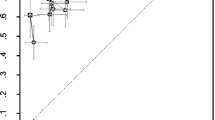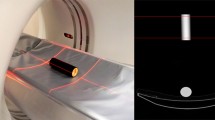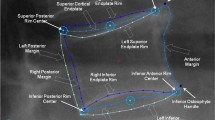Abstract:
On radiation safety grounds there is concern about the morbidity attributable to routine radiographs of the spine for the identification of new fractures in large-scale trials of fracture prevention. However, the role of the potentially safer low-radiation-dose technique of vertebral morphometry performed by third generation dual-energy X-ray absorptiometry equipment requires evaluation for use in clinical trials. We have therefore investigated the short-term inter-scan imprecision as well as the imprecision attributable to different-day analyses by the same operator and differences in analyses by different operators. The volunteer subjects were participants in a pilot study for a randomized controlled trial of hormone replacement therapy (Women”s International Study of long Duration Oestrogen after Menopause, WISDOM). Each subject had two morphometric X-ray analysis scans separated by 2–4 weeks. Exclusions were women with densitometrically defined osteoporosis, as defined by the WHO criterion, and women with a body mass index exceeding 30.9 kg/m2. On average, the women were 58.7 years of age and had bone mineral density values in the lumbar spine which were about 0.7 SD units higher than a reference US female age-matched population. Scans were assessed from vertebrae T7 through L4. In the study there were no clinically significant differences in performance between the Hologic QDR 4500A and the Lunar Expert XL equipment. Between-scan imprecision was significantly worse than imprecision attributable to reanalysis of the same scan by a different operator or the same operator after an interval. Vertebral level had an effect on measurement uncertainty, especially at the level of the diaphragm and at T7. Coefficients of variation, expressed as percentages of mean values, were better for absolute height measurements than for height ratios, ranging from 1.75% to 3.40% for the three heights measured on three separate machines and from 2.34% to 4.11% for the two height ratios. These results compared favorably with the equivalent figures from a parallel study of morphometry precision undertaken using standard lateral radiographs of the thoracic and lumbar spine (3.1–3.6% and 3.8–3.9%, respectively). We conclude that in trials of prevention therapy in women (or men) selected for not having osteoporosis, low-dose vertebral morphometry using the Hologic 4500A, the Lunar Expert XL or similar equipment is preferable on safety grounds to the classical technique based on standard radiographs, although conventional radiology may still be required in those with prevalent or incident deformities to exclude causes other than osteoporosis. The place of this low-dose technique in trials performed on patients with osteoporosis requires further study.
Similar content being viewed by others
Author information
Authors and Affiliations
Additional information
Received: 29 June 1999 / Accepted: 15 December 1999
Rights and permissions
About this article
Cite this article
Crabtree, N., Wright, J., Walgrove, A. et al. Vertebral Morphometry: Repeat Scan Precision Using the Lunar Expert-XL and the Hologic 4500A. A Study for the “WISDOM” RCT of Hormone Replacement Therapy . Osteoporos Int 11, 537–543 (2000). https://doi.org/10.1007/s001980070098
Issue Date:
DOI: https://doi.org/10.1007/s001980070098




